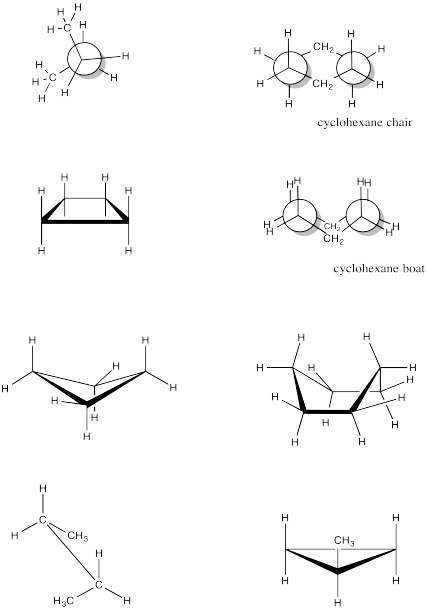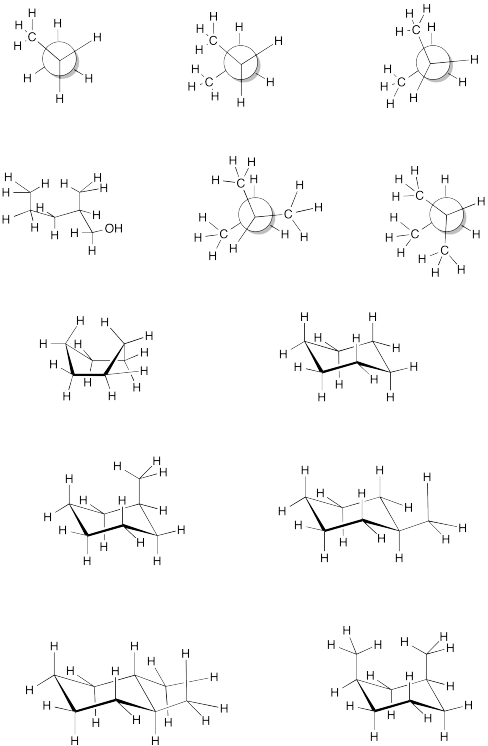CA4. The Basis Set
Using information on the rotational barrier of butane, which is about 4.5 kcal/mol, we can add more information to our basis set. We will also use information from other sources to build a more complete picture.
- In ethane, there is no steric strain, because the hydrogens are too far apart to crowd each other.
- In propane (CH
One simple method of assessing steric strain, without memorizing a big table of information, is use an atom counting method. Count from one hydrogen, to the next atom, and so on to the other hydrogen that seems likely to interact with the first. In ethane, this distance is four atoms (H-C-C-H). In propane it is five. In butane it is six. The potential steric interaction in butane is accordingly called a six atom interaction. The basis set used in this method is given in the table below.
Table CA4.1. Atom-Counting Basis Set for Estimating Strain Energy
|
Type of strain |
Strain energy (kcal/mol) |
|
torsion ( three pairs of adjacent bonds eclipsed) |
3 |
|
4-atom sterics |
0 |
|
5-atom sterics |
0.1 |
|
6-atom sterics, gauche |
1 |
|
6-atom sterics, eclipsed |
1.5 |
|
7-atom sterics, gauche |
3 |
Note that a methyl (CH
3) group can always rotate, so multiple hydrogens on one methyl group could potentially interact with multiple hydrogens on another, but not at one time. We only need to take into account the full interactions that could happen simultaneously.Problem CA4.1.
Calculate the torsional strain in the following cases.

Problem CA4.2.
Find all 6 atom interactions in the following pictures.

Problem CA4.3.
Draw Newman Projections every 60° for the following molecules. Assess the strain energy for each Newman Projection found by rotating about the C2-C3 bond. Use the basis set in Table CA1. Plot strain energy vs. dihedral angle and label
a) 2-methylpropane (CH
3CH(CH3)CH3) b) 2,3-dimethylbutane (CH3CH(CH3)CH(CH3)CH3)c) pentane (CH3CH2CH2CH2CH3)
